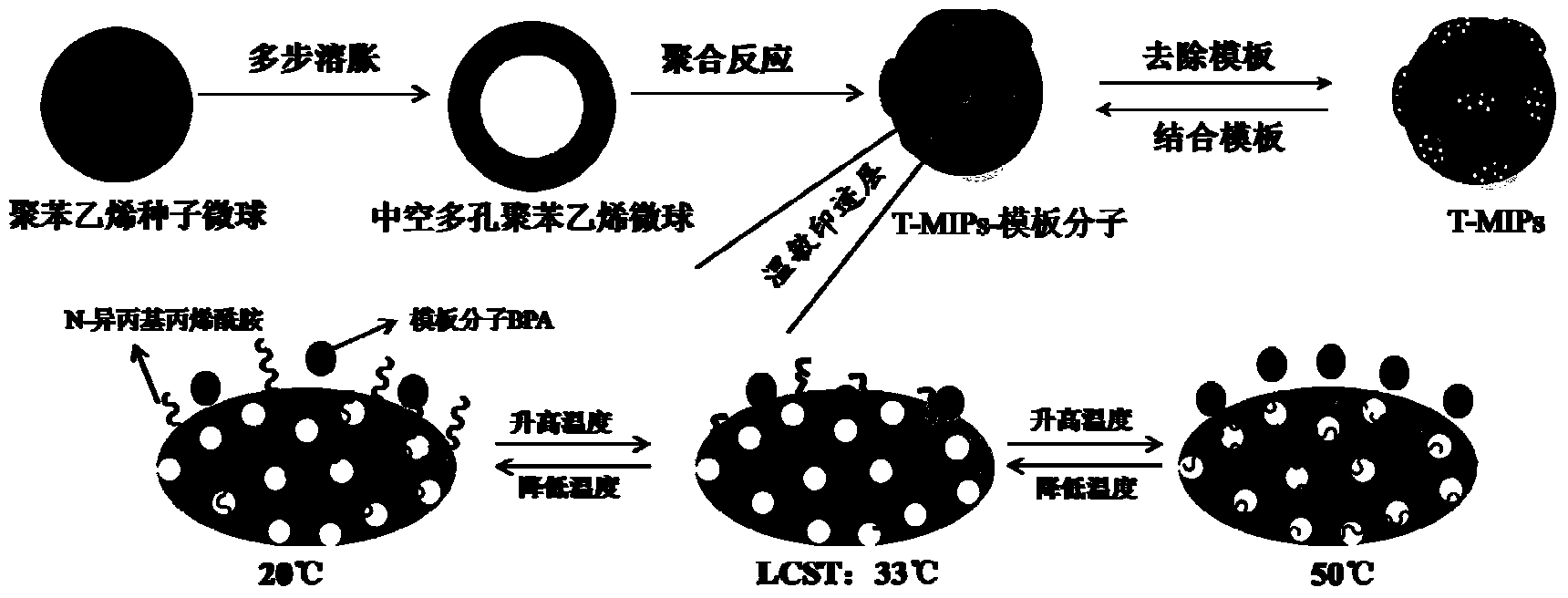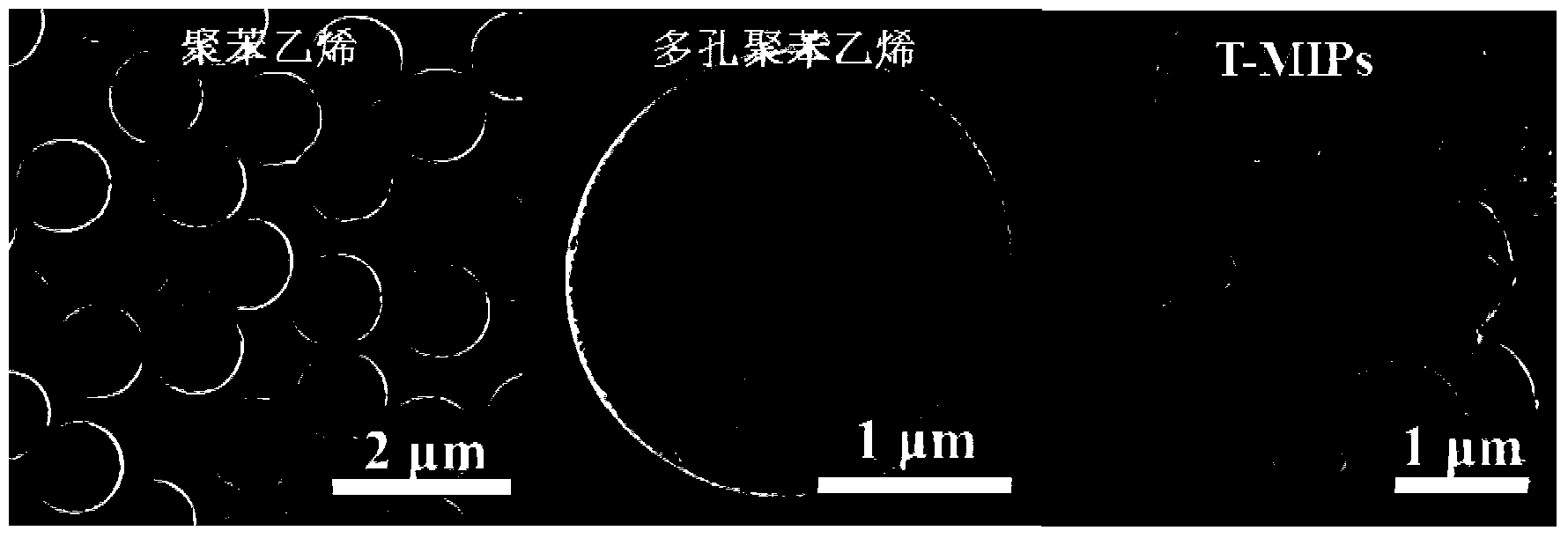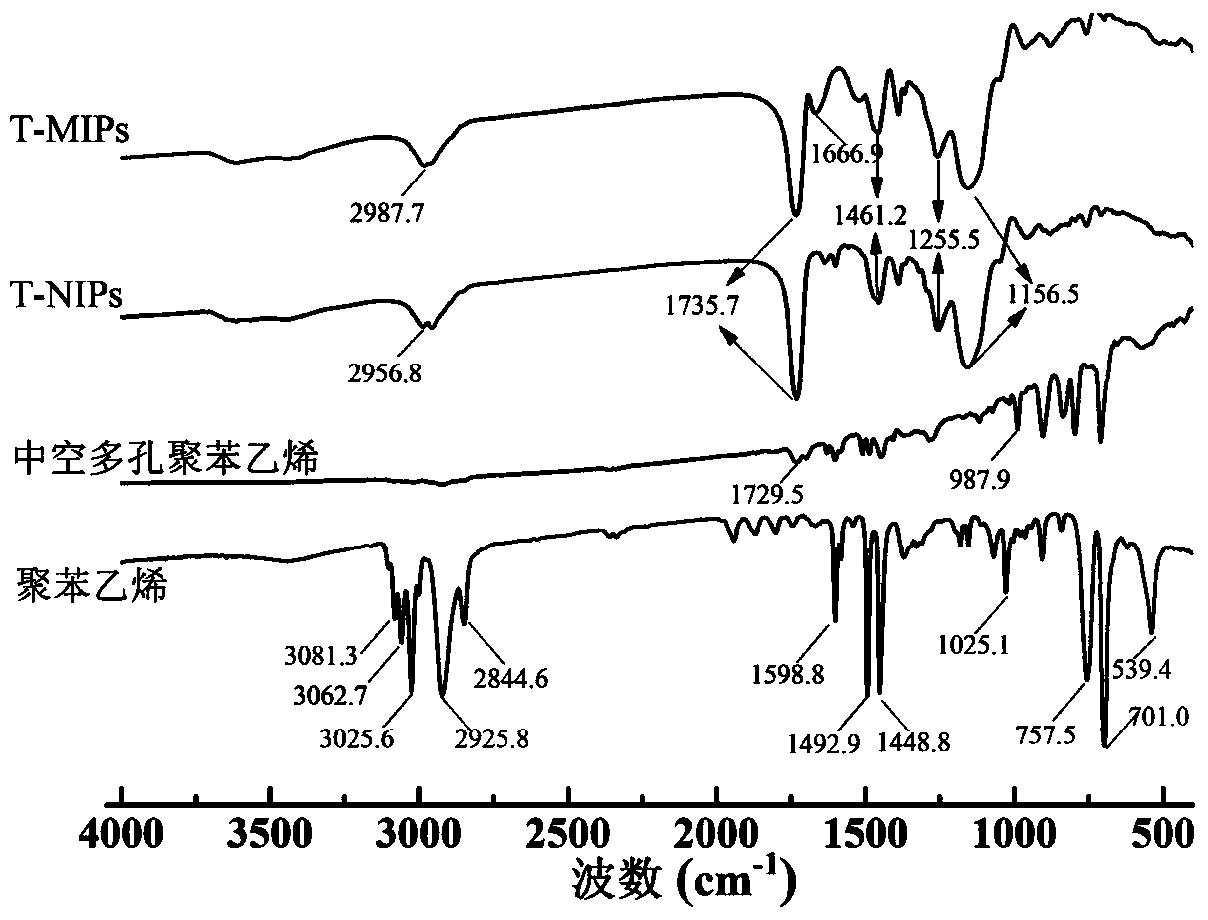Thermosensitive bisphenol A (BPA) imprinted polymeric microsphere and application thereof
An imprinted polymer, temperature-sensitive bisphenol technology, applied in the fields of material science and engineering and environmental science, can solve the problems of difficult to fully display the recognition performance, no good carrier loading, small BPA adsorption capacity, etc., and achieves good solution temperature response. The principle is simple and novel, and the effect of improving the adsorption capacity
- Summary
- Abstract
- Description
- Claims
- Application Information
AI Technical Summary
Problems solved by technology
Method used
Image
Examples
Embodiment 1
[0031]a. Synthesis of polystyrene seed microspheres: add 100 mL of absolute ethanol, 20 mL of deionized water and 0.7 g of polyvinylpyrrolidone to a 250 mL three-necked flask, then disperse them uniformly by ultrasonication and constant stirring, and then slowly add 5 mL The styrene was purged with nitrogen for 30 min, then 40 mg of azobisisobutyronitrile was added, the temperature of the mixed solution was raised to 60 °C and maintained, and the polymerization reaction was carried out under nitrogen protection for 24 h. The obtained polystyrene microsphere product was washed 6 times with deionized water and absolute ethanol in turn, and the obtained product was vacuum-dried at 40° C. to constant weight, and collected for later use.
[0032] b. Synthesis of hollow porous polystyrene microspheres: add 0.125 g of sodium dodecyl sulfonate and 50 mL of deionized water to a 100 mL two-necked flask, shake to dissolve completely, and then add 0.2 g of the above-synthesized polystyrene...
Embodiment 2
[0040] Weigh 20 mg of T-MIPs and T-NIPs samples respectively, put them in 6 10 mL ground-mouth stopper test tubes, and add 2 mL of BPA and its 5 structural analogs (β-estradiol) with a concentration of 50 mg / L, respectively. , estriol, estrone, cholesterol and phenol) in acetonitrile solution, shake at room temperature for 24h. The mixture was then centrifuged and filtered with a 0.45 μm microporous membrane. The concentration of BPA and its structural analogs in the filtrate was determined by HPLC-UV, and the imprinted products were calculated according to the concentration of various phenolic estrogens. The adsorption capacity was measured 3 times in parallel for each experiment. As a control, 20 mg of T-NIPs were weighed and the same experiment was performed. The result is as Figure 4 As shown, the adsorption capacity of T-MIPs for BPA was significantly higher than that of the other five phenols, indicating the existence of specific sites in T-MIPs with high selectivity ...
Embodiment 3
[0042] Weigh 10 mg of T-MIPs and T-NIPs samples respectively and add them to 2.0 mL of solutions containing different concentrations of BPA (1, 10, 30, 50, 100 mg / L), put them in a 5 mL stoppered glass test tube, and then transfer them immediately After being fully adsorbed for 24 hours in a constant temperature water bath at 20, 33 and 50 °C, the samples were quickly filtered and centrifuged, and filtered with a 0.45 μm microporous membrane. The BPA concentration in the filtrate was quantified by HPLC-UV, and the three temperatures were evaluated. Changes in the BPA adsorption capacity of the lower imprinted polymers. Each group of experiments was measured 3 times in parallel. The result is as Figure 5 As shown, the adsorption of T-MIPs and T-NIPs to different concentrations of BPA has a certain responsiveness with the change of temperature; at the lower critical temperature (LCST) of 33 °C, T-MIPs has the best adsorption effect on template molecules , indicating that the ...
PUM
 Login to View More
Login to View More Abstract
Description
Claims
Application Information
 Login to View More
Login to View More - R&D
- Intellectual Property
- Life Sciences
- Materials
- Tech Scout
- Unparalleled Data Quality
- Higher Quality Content
- 60% Fewer Hallucinations
Browse by: Latest US Patents, China's latest patents, Technical Efficacy Thesaurus, Application Domain, Technology Topic, Popular Technical Reports.
© 2025 PatSnap. All rights reserved.Legal|Privacy policy|Modern Slavery Act Transparency Statement|Sitemap|About US| Contact US: help@patsnap.com



